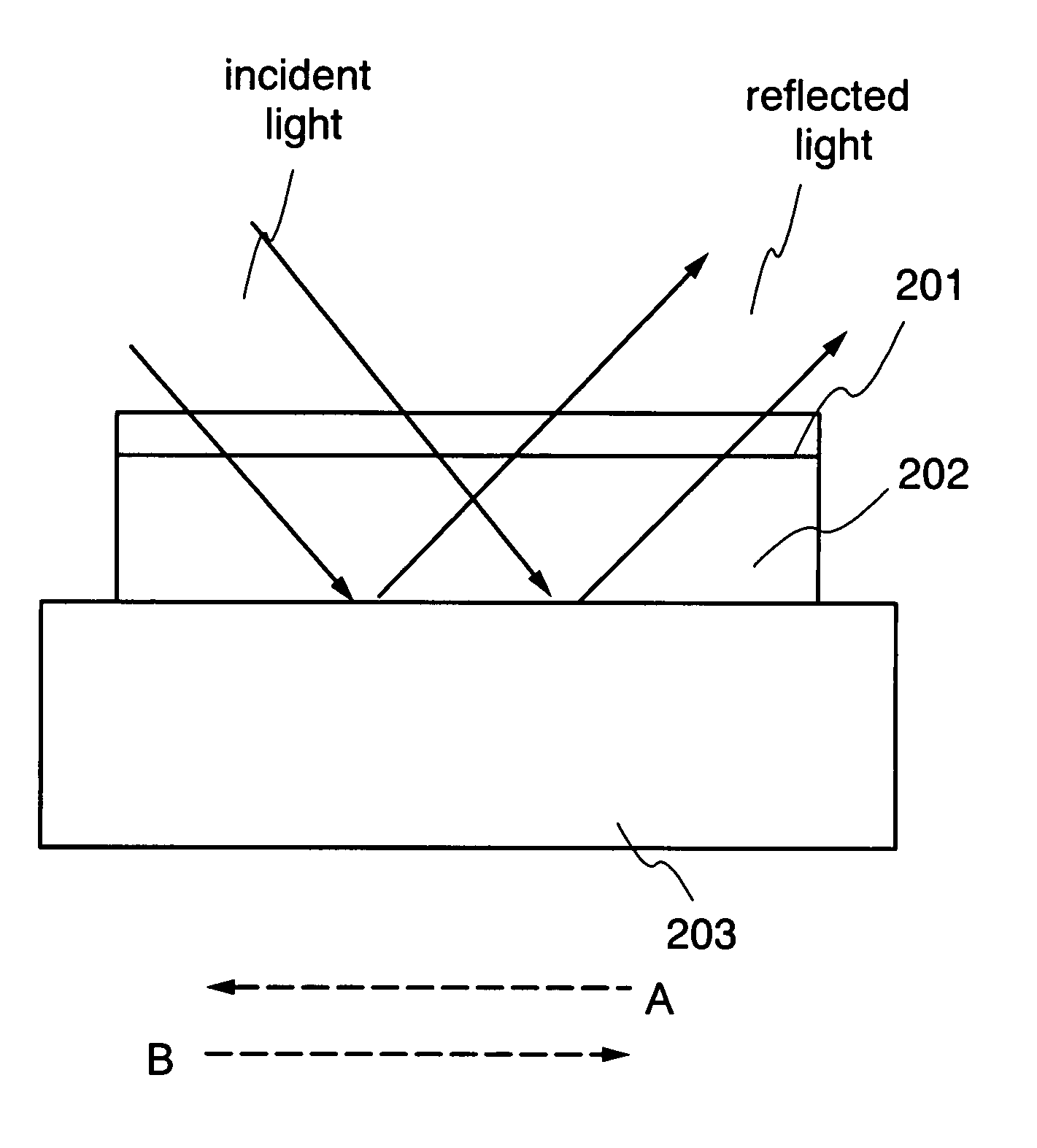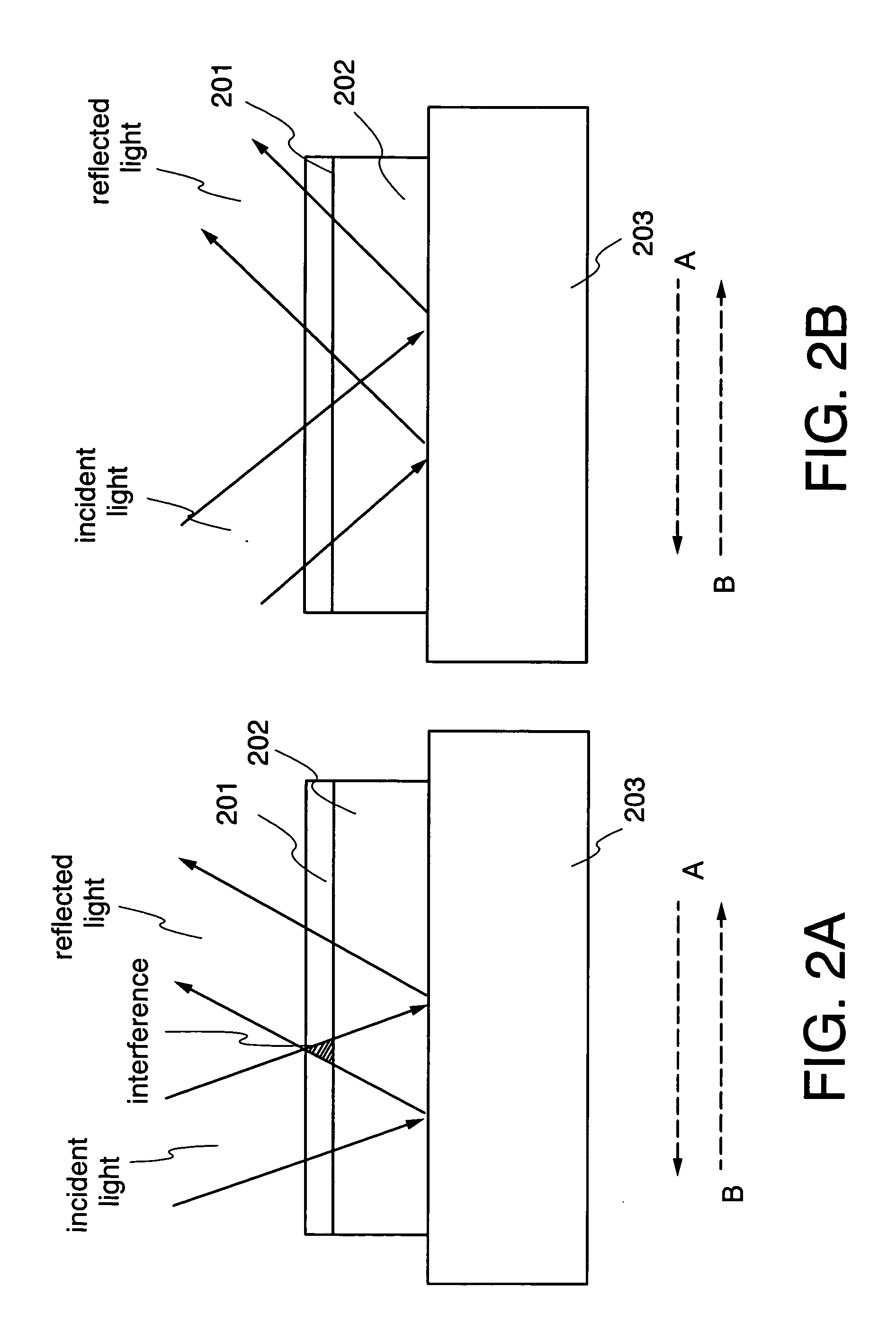Laser irradiation method, method for manufacturing a semiconductor device, and a semiconductor device
a laser irradiation and semiconductor technology, applied in the direction of semiconductor/solid-state device testing/measurement, radiofrequency controlled devices, instruments, etc., can solve the problem that the incident light on the semiconductor film interferes with the reflected light from the second surface, so as to improve the uniformity of annealing, and reduce the effect of laser beam transmittan
- Summary
- Abstract
- Description
- Claims
- Application Information
AI Technical Summary
Benefits of technology
Problems solved by technology
Method used
Image
Examples
embodiment 1
[0035]FIGS. 4A and 4B are drawings for explaining a thin film chip in an embodiment 1;
[0036]FIGS. 5A and 5B are drawings for explaining how to mount the thin film chip on the substrate with the pixel portion formed thereon in an embodiment 1;
embodiment 2
[0037]FIG. 6 is a drawing for explaining a CPU in an embodiment 2; and
[0038]FIG. 7 is a drawing for explaining an embodiment mode 2.
embodiment
[0039] (Embodiment Mode 1)
[0040] The embodiment mode 1 of the present invention is explained in detail with reference to FIGS. 1 and 3.
[0041] Initially, impurities are mixed into a glass substrate to form a colored glass substrate that is opaque to the visible light. Then, an amorphous semiconductor film or a non-single crystal semiconductor film is formed over the colored glass substrate, and the laser annealing is performed to the colored glass substrate as the irradiated surface. It is noted that not only the colored glass substrate, but also another substrate such as a ceramic substrate made of the material that is opaque to the laser beam to be irradiated and that can resist the heat in the laser annealing can be used as the substrate.
[0042] Next, a laser irradiation method is explained with reference to FIG. 1. In FIG. 1, the laser beam propagates in a direction indicated by arrows of continuous lines. A laser oscillator 100 is a YVO4 laser emitting a second harmonic light. ...
PUM
| Property | Measurement | Unit |
|---|---|---|
| length | aaaaa | aaaaa |
| temperature | aaaaa | aaaaa |
| reflectivity | aaaaa | aaaaa |
Abstract
Description
Claims
Application Information
 Login to View More
Login to View More - R&D
- Intellectual Property
- Life Sciences
- Materials
- Tech Scout
- Unparalleled Data Quality
- Higher Quality Content
- 60% Fewer Hallucinations
Browse by: Latest US Patents, China's latest patents, Technical Efficacy Thesaurus, Application Domain, Technology Topic, Popular Technical Reports.
© 2025 PatSnap. All rights reserved.Legal|Privacy policy|Modern Slavery Act Transparency Statement|Sitemap|About US| Contact US: help@patsnap.com



